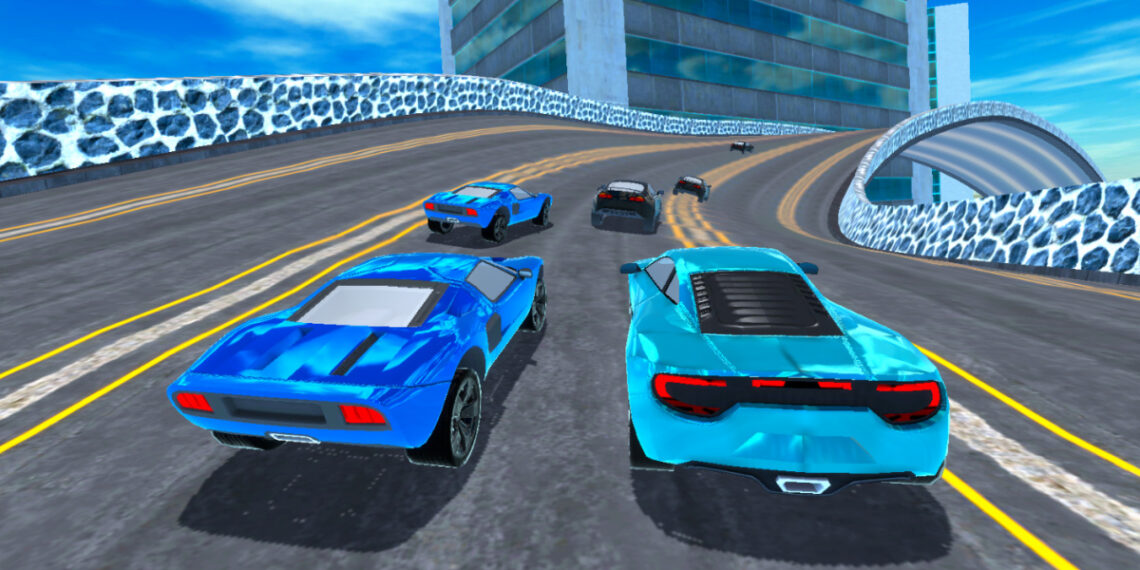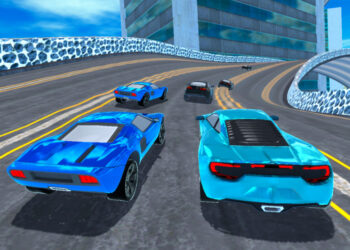Urban traffic is more than a collection of vehicles moving from one place to another. It is a living, breathing rhythm shaped by people, timing, design, and daily habits. When we think about Real Cars in City environments, we think about practical vehicles navigating tight spaces, interacting with pedestrians, responding to signals, and adjusting to unpredictable moments. City cars are not symbols of speed or freedom—they are reflections of how modern life flows, stops, and moves again. They carry stories of commuters, workers, families, and travelers who depend on them every day.
The Everyday Reality of City Traffic
In most urban centers, driving a car is an experience that tests patience, awareness, and adaptability. Congestion is a part of the routine, formed by population density, commercial activity, and the sheer number of people who rely on vehicles for their daily needs. Morning and evening rush hours often stretch roads beyond their capacity, slowing speeds down to a crawl. Drivers move through intersections filled with honking, braking, and subtle negotiations of space.
Unlike open highways where vehicles maintain steady momentum, city streets require constant adjustments. Real traffic data from major cities worldwide consistently shows the same patterns: stop-and-go movement, slow acceleration, frequent stops, and unpredictable flow changes. It is a dynamic environment where each driver’s decisions affect the next.
How Real Cars Move Through Busy Streets
Navigating through a city is far from linear. A typical car must adapt to bottlenecks, sudden lane changes, delivery trucks stopping without warning, pedestrians crossing unexpectedly, and cyclists weaving through traffic. This constant variety forces drivers to maintain a heightened level of attention.
A standard city drive includes negotiating narrow streets, easing through tight turns, braking often, and accelerating only briefly. Cars rarely reach high speeds. The flow of traffic is influenced by intersections, road width, street parking, construction zones, and any changes in weather. Even small details—like a pedestrian delaying at a crosswalk—can alter movement for an entire lane.
This pattern is what defines the presence of Real Cars in City settings: practical, moderated, and human-centered driving.
What Drivers Experience in a Typical City Day
A day behind the wheel in a city is a series of small interactions. During the early morning, headlights form long lines as people commute to work. Drivers anticipate delays before they even start their engines. Mid-day brings a calmer but still unpredictable rhythm—delivery vans dominate the lanes, tourists walk slowly across intersections, and traffic lights dictate the pace.
Evening rush hour brings another surge. Cars return home, public transport grows crowded, and ride-share vehicles multiply around commercial areas. Taxis stop abruptly to pick up passengers, and drivers must react instantly. All these elements create an emotional mix of stress, focus, and sometimes surprising moments of calm.
The daily experiences of drivers show that city driving is uniquely human. It’s filled with quick decisions, visual cues, and constant negotiation with the environment.
The Human Side of City Driving
Behind every wheel is a person interpreting the world around them. Drivers watch for subtle signals: a pedestrian glancing over their shoulder, a cyclist’s hand gesture, the slowing of a bus ahead, or a scooter slipping through a narrow space. These interactions shape the movement of the entire street.
City driving also reveals the emotional layers of mobility. Some people feel anxious in dense traffic. Others find comfort in a familiar route. Some enjoy the motion; others simply tolerate it. Cars in cities must adjust not only to physical boundaries but also to human unpredictability.
This is why Real Cars in City spaces feel different from anywhere else—they are extensions of human behavior, patience, instinct, and focus.

The Types of Cars You See Most in Cities
Cities often favor compact and efficient vehicles. Small hatchbacks, lightweight sedans, hybrids, electric cars, and taxis dominate the streets. These cars are easy to maneuver, easier to park, consume less fuel, and work well in tight spaces.
Motorcycles and scooters play major roles too, especially in high-density regions. Their ability to move through narrow gaps makes them ideal for cities with heavy congestion. Ride-share vehicles, delivery vans, and public transport buses also add complexity to the city’s traffic landscape.
Larger SUVs or trucks appear less frequently because they struggle in tight lanes and can be difficult to park. City driving rewards practicality rather than size, and the vehicles present on the streets reflect that reality.
What Shapes the Flow of Urban Traffic
Many factors influence how cars move in the city. Road layout, traffic signal timing, lane width, pedestrian crosswalks, bus lanes, and construction projects all play a major role. One small change—like a traffic light adjustment or a new bike lane—can affect the flow for thousands of drivers.
Weather also shapes traffic. Rain slows movement, fog affects visibility, and extreme heat can increase road repairs or slowdowns. Cultural driving habits also influence flow. Some cities have very patient traffic patterns; others are more aggressive.
It’s not just the number of cars that matters, but how the entire system works together. Cars, buses, motorcycles, and pedestrians all share the same limited space, and each decision affects overall movement.
Real Cars and Real Challenges in City Streets
Driving a car in a city brings real difficulties. Parking is one of the biggest frustrations—spots are limited, often expensive, and sometimes require circling for long periods. Congestion can turn a 10-minute trip into a 30-minute one. Construction detours complicate routes. Signage may be unclear. One accident can disrupt traffic across entire neighborhoods.
Another challenge is mental fatigue. City drivers must constantly scan their surroundings, read patterns, anticipate errors, and stay patient in slow-moving lines. This can be mentally draining. Yet, despite the challenges, millions rely on city cars daily because of the convenience, autonomy, and comfort they provide.
The reality of Real Cars in City streets is shaped by these everyday struggles—practical, emotional, and environmental.
How Technology Is Changing Daily City Driving
Technology has transformed how city driving feels. Navigation apps help drivers avoid traffic bottlenecks, find parking, and choose the fastest routes. Parking sensors ease parallel parking difficulties. Electric vehicles reduce noise and emissions, improving overall quality of life.
Smart traffic systems now help cities reduce congestion by adjusting traffic lights in real time. Connected vehicles communicate with street infrastructure, making intersections safer. Cameras and sensors improve safety for pedestrians and cyclists. Many modern cars also support emergency braking, blind-spot monitoring, and adaptive cruise control—useful features in complex city environments.
Future advancements may allow cars to coordinate with each other automatically, making traffic smoother and safer for everyone.
The Future of Real Cars in Modern Cities
The future of urban mobility is evolving quickly. Cities are moving toward quieter, cleaner, more efficient streets. Electric vehicles will likely replace traditional combustion engines. More car-free zones may emerge. Shared mobility—like ride-share services or self-driving fleets—may reduce the need for private ownership.
Urban planners are focusing on safety, sustainability, and smarter movement systems. Roads may include dedicated lanes for connected vehicles. Parking might become less central as more people use alternative modes of transportation.
Yet, even as cities evolve, cars will remain a part of the picture. They will simply adapt, becoming more intelligent, compact, and integrated with the city’s digital systems.
Conclusion
Understanding Real Cars in City streets means understanding daily life in an urban environment. Cars in cities behave differently not because they are slower or limited, but because they are woven into a complex environment of people, time, space, and structure. A city’s heartbeat is found in its movement, and its cars play a central role in shaping that movement.
City driving is full of challenges—congestion, parking, unexpected delays—but it is also full of rhythm, connection, and human stories. Each car on the road represents someone heading to work, meeting family, delivering goods, or chasing dreams. Real city cars are more than machines; they are silent witnesses of daily life, carrying people through the intertwined motion of the modern world.\
FAQs
Why do cars move slower in city streets compared to highways?
Cars move slower in cities because of frequent intersections, traffic lights, pedestrian crossings, and higher population density. Drivers must react to many small, unpredictable factors, which naturally reduces speed.
What are the biggest challenges drivers face in city traffic?
The biggest challenges include congestion, limited parking, sudden stops, tight lanes, and constant interaction with pedestrians and cyclists. These elements require drivers to stay alert and make quick decisions.
Are smaller cars better for city driving?
Yes. Smaller cars are easier to maneuver, quicker to park, and more fuel-efficient in stop-and-go traffic. They also fit better on narrow streets commonly found in dense urban areas.
How is technology improving city driving?
Navigation apps, parking sensors, electric engines, and smart traffic systems all help reduce delays and improve the driving experience. These technologies make driving smoother, safer, and more predictable.
Will city driving change in the future?
Yes. More electric cars, smarter traffic control, shared mobility services, and redesigned road systems will shape the future of city driving. The goal is cleaner, quieter, and more efficient streets.
FAQs for “Real Cars in City Streets: What Everyday Traffic Really Looks Like”
1. Why do cars move slower in city streets compared to highways?
Cars move slower in cities because of frequent intersections, traffic lights, pedestrian crossings, and higher population density. Drivers must react to many small, unpredictable factors, which naturally reduces speed.
2. What are the biggest challenges drivers face in city traffic?
The biggest challenges include congestion, limited parking, sudden stops, tight lanes, and constant interaction with pedestrians and cyclists. These elements require drivers to stay alert and make quick decisions.
3. Are smaller cars better for city driving?
Yes. Smaller cars are easier to maneuver, quicker to park, and more fuel-efficient in stop-and-go traffic. They also fit better on narrow streets commonly found in dense urban areas.
4. How is technology improving city driving?
Navigation apps, parking sensors, electric engines, and smart traffic systems all help reduce delays and improve the driving experience. These technologies make driving smoother, safer, and more predictable.
5. Will city driving change in the future?
Yes. More electric cars, smarter traffic control, shared mobility services, and redesigned road systems will shape the future of city driving. The goal is cleaner, quieter, and more efficient streets.
Also read :Taming io Explained: Tips That Make the Game More Fun and Playable














